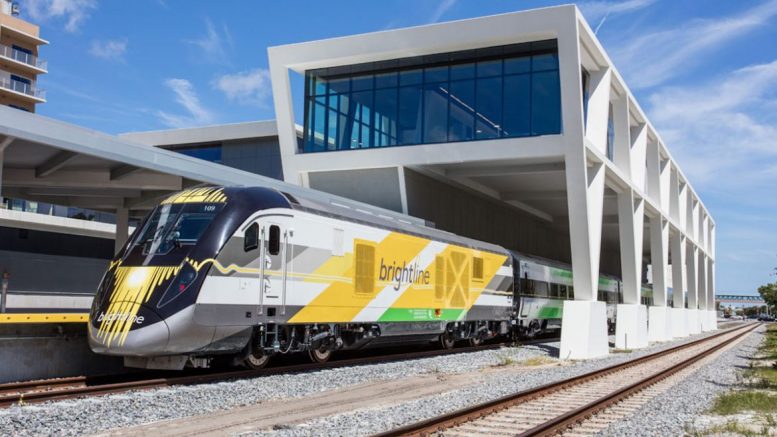Background: How did we get here?
In the late 19th and early 20th century, American railroads were at the top of their game. Locomotives were becoming more powerful, efficient, and quick, with examples including the 4-8-4 “Northern” heavy steam locomotive, diesel-electric locomotives such as EMD’s E units, and sleek, efficient electric locomotives like Pennsylvania’s GG-1 that could run at up to 8500 horse power. The regulation of the industry, through laws such as the Interstate Commerce Act and the Sherman Antitrust Act, in addition to the efficient management and steering of the industry by tycoons such as J. P. Morgan, allowed railroads to remain competitive and innovative as well as provide reasonable rates for both freight and passenger transport.
After the US led the allies to victory in the second world war, American society experienced a drastic shift as the G.I. Bill allowed some veterans from the war, in addition to their families, to move out of the more densely-populated and rail-centric cities to the sprawling suburbs dominated by automobiles. President Eisenhower approved of the development of the national highway system for both defense (in the event of a Soviet strike) and civilian purposes. Another development in transportation was the introduction of jet airliners such as the Boeing 707 and Douglas DC-8, which were quieter and faster than their propeller-driven predecessors like the Lockheed constellation. The ease of car and plane travel caused intercity passenger rail to fall out of favor with the public in the 1950s and 60s, even as countries like Japan were developing successful high speed rail. The result of this was the formation of Amtrak, a government-owned company that took over the passenger operations of private rail companies.
As the century went on, freight lines were continuously consolidating their power by buying out smaller competitors. (A local example of this was Union Pacific’s acquisition of Chicago & North Western in 1995.) Today, four large freight companies control nearly all of the market: Union Pacific and BNSF (Burlington Northern & Santa Fe) hold a duopoly in the west, while a similar duopoly is held in the east by Norfolk Southern and CSX. With little competition to worry about, the railroads designed their business practices around the sole purpose of maximizing profit. This led to decreased focus on repair of equipment and rail lines, maintenance of infrastructure, and an increase in train length, which had drastic negative effects on passenger rail, employee and public safety, and the overall state of the railroads.
Happening now: Norfolk Southern crash aftermath, Brightline
To learn more about the Norfolk Southern derailment and its aftermath, you can read this Acronym article from an earlier edition or check the Wikipedia page. In brief, 38 cars of a Norfolk Southern train going through East Palestine, OH, derailed and spilled the toxic chemicals they carried, such as vinyl chloride. Even after cleanup efforts by Norfolk Southern and others, there are lingering environmental effects in the region. Some claimed that electrically-controlled pneumatic brakes (ECP) would have been capable of preventing the accident. ECP brakes differ from conventional pneumatic breaks by having every car equipped with a computer that receives a breaking signal from the locomotive and activates the car’s pneumatic brakes, as opposed to having a signal in the form of a change in air pressure sent down the train’s pneumatic system from the locomotive. Transportation secretary Buttigieg tweeted a similar claim, although this was a perhaps partisan statement in connection to the overturning of some ECP regulations during the Trump administration. Others, however, such as transit-oriented YouTuber Alan Fisher, think that the train still would have derailed and caused damage even with ECP brakes. Beyond the tangled web of politics surrounding the incident, the overall sentiment on the state of American rail is likely one of disappointment and desire for reform of any kind.
On the brighter side of rail in the Sunshine State, (pun definitely intended) privately-owned passenger rail company Brightline has been beginning high-speed testing of up to 110 mph, or ~177 kph. Brightline runs from Miami to West Palm Beach, and plans are established to expand services to Orlando and Tampa. Brightline is unique for a number of reasons: it is (as of now) the only privately-owned intercity passenger rail service in the U.S., has made considerable efforts to improve existing and develop new infrastructure along its lines, and has plans to expand west with an electrified high-speed line between Los Angeles and Las Vegas. Brightline has been subject to its fair share of controversies, though–it has the highest per-mile death rate of any railroad in the country, although a report found that these deaths were not exactly the fault of the railroad, but due to suicides and drivers trying to “beat” trains through the crossing. Some residents have also complained about noise from trains blowing horns at crossings, but Brightline has pointed out that they are simply following regulations by using horns during their testing.
How can American rail improve? (Opinion)
One of the best ways American rail companies can improve is to put more effort into their service, be it through track upgrades, better treatment of their employees, and especially electrification efforts. In 2020, around 57% of the European Union’s rail lines were electrified, and India is also making historic electrification efforts. By “electrified rail” in this context, I’m referring to trains that receive power by connecting to an overhead wire, or “catenary,” above the track. If you are (like me) not mechanically inclined, you can watch this excellent video on how the system works.
Opponents to American rail electrification, such as the AAR (American Association of Railroads) claim that the high upfront costs to install catenary systems, upgrade infrastructure, and phase out diesel-electric for electric locomotives are too much to overcome in the long run, and that railroads should instead focus on producing more efficient diesel engines like GE’s EPA tier-4 compliant Evolution Series. While I agree that the efforts for more efficient diesel engines are worthwhile, railroads don’t have to neglect one environmentally-friendly option in favor of another. In the early-to-mid 20th century, a variety of American freight railroads had electrified rail lines in a diverse array of locations, from Milwaukee Road’s electric freight and passenger service in the west to the EL-C locomotives that hauled coal and other freight for many railroads in the east. The EL-Cs in particular had a “hood unit” design similar to that of present-day American freight diesels, so there could be some possibility of adapting diesel-electric to fully electric locomotives, although I’ll admit I have nowhere near the amount of technical knowledge of these trains required to assess the possibility of such an arrangement.
Beyond electrification, American railroads should, either through their own initiative or governmental, public, or union pressure, treat their employees better to have a stronger and more capable workforce. The massive strike that almost happened last year shows the need for improvements in labor relations nationwide, and especially in the rail industry. Having employees who weren’t underpaid and overworked would no doubt benefit a railroad’s operations, even at the cost of more of the railroad’s profits for worker salary.
The devastation caused by the Norfolk Southern derailment, the poor management that led to it, and the success of Brightline despite its high expenses demonstrates how American railways simply can’t succeed by putting in the minimum effort to maximize short-term profit. Long-term, large-scale projects such as expanding nuclear power, boosting the restoration of natural habitats, and improving all forms of American infrastructure, (which means modernizing our rail lines) are certainly daunting for their upfront costs. Then again, so were the business ventures that built much of the nation’s infrastructure and industry—and made America into the powerhouse it is today—in the first place.
If you disagree with something I said in this section–maybe you think that freight rail should be nationalized, battery-electrics or hydrogen fuel cell locomotives are better for American rail lines than traditional electrics, or you think that rail isn’t as important of an infrastructure or economic priority–let me know what you think in the comments! I’d be interested to hear it.
(Note: The relation between unions, government regulations and incentives, and the free market, all of which are (to an extent) compatible with liberal democracy, is a contentious issue that’s been discussed from a variety of angles, from libertarian to socialist. You can interpret the content of this article and my argument from your own viewpoint.)






Be the first to comment on "The Norfolk Southern Crash, Brightline, and The Future of American Rail"